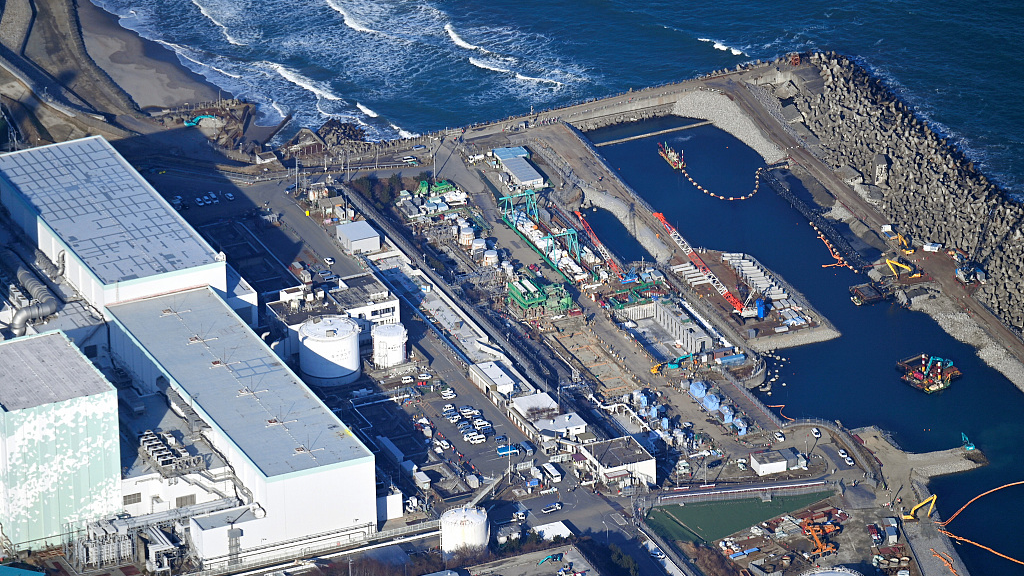
Preparation work to release treated radioactive water continues at Tokyo Electric Power Co (TEPCO)'s Fukushima Daiichi Nuclear Power Plant in Okuma, Fukushima, Japan, January 19, 2023. /CFP
Preparation work to release treated radioactive water continues at Tokyo Electric Power Co (TEPCO)'s Fukushima Daiichi Nuclear Power Plant in Okuma, Fukushima, Japan, January 19, 2023. /CFP
The Tokyo Electric Power Company (TEPCO) began trial operation of a facility that discharges treated water from the crippled Fukushima Daiichi nuclear power plant, Kyodo News reported on Monday.
Fukushima media reported that the trial operation will be carried out on Monday by mixing fresh water and seawater, and will take 10 days to two weeks to check whether the specified amount of water can flow to the sea and whether the shutoff device can shut off water in the event of an emergency.
According to a report issued by the plant's operator Tokyo Electric Power Company (TEPCO) on June 5, the radioactive elements in marine fish caught in the harbor of the Fukushima Daiichi Nuclear Power Plant far exceeded safety levels for human consumption, with the content of Cs-137 reaching 180 times that of the standard maximum stipulated in Japan's food safety law.
South Korea also announced it would maintain a ban on imports of seafood from Japan's Fukushima Prefecture, according to reports from Nikkei Asia on April 30. The country has for the past decade banned imports of food from the area due to concerns over food safety and fears of radiation contamination following the 2011 nuclear disaster.
The South Korean government has decided to strengthen radiation detection of aquatic products and to inspect seawater loaded on ships. The Ministry of Oceans and Fisheries plans to increase the number of radiation tests from more than 5,000 last year to 8,000. In addition, the South Korean government began investigating the origin labeling of Japanese fishery products in June, and will expand the number of origin labeling items for restaurants from 15 to 20 from July. The government will also strengthen the supervision of seawater loaded on ships. According to the regulations of the Ministry of Oceans and Fisheries, vessels departing from the Fukushima nuclear power plant accident area must replace the seawater loaded and maintain a distance of 500 km or more from Korean waters.
For more
Despite scientific evidence and public opposition, Japan to test ocean nuclear wastewater discharge on June 12
93% of respondents oppose Japan's contaminated water disposal plan
(If you want to contribute and have specific expertise, please contact us at nature@cgtn.com.)